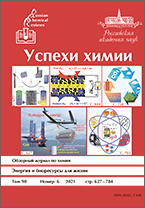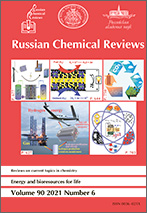|
This article is cited in 44 scientific papers (total in 44 papers)
Redox flow batteries: role in modern electric power industry and comparative characteristics of the main types
M. M. Petrovab, A. D. Modestovc, D. V. Konevb, A. E. Antipovabcd, P. A. Loktionovab, R. D. Pichugovab, N. V. Kartashovaad, A. T. Glazkovabc, L. Z. Abunaevaae, V. N. Andreevc, M. A. Vorotyntsevabc
a D. Mendeleev University of Chemical Technology of Russia, Moscow
b Institute of Problems of Chemical Physics, Russian Academy of Sciences, Chernogolovka, Moscow region
c Institute of Physical Chemistry and Electro Chemistry, Russian Academy of Sciences, Moscow
d Lomonosov Moscow State University
e Moscow Institute of Physics and Technology (National Research University), Dolgoprudny, Moscow Region

Abstract:
In recent years, the key principles of the electric power industry have radically changed and the number of studies on the development of devices for electrical energy storage in a different form such as mechanical or chemical energy has rapidly increased. This review gives a brief description of these devices. The attention is focused on redox flow batteries (RFBs), a promising type of energy storage devices capable of efficiently operating in distributed power grids, in order to eliminate the imbalance between the time-varying electricity production by “unconventional sources” and electricity consumption. At the design level, RFBs combine the principles of fuel cells and chemical energy sources with solid electroactive materials: transitions between electrical and chemical forms of energy in these devices occur upon oxidation and reduction of redox-active electrolytes, which are stored in separate tanks and pumped into the electrode compartments of the membrane electrode assembly (MEA) separated by a semi-permeable membrane. This approach ensures an important advantage of these devices over other types of chemical energy sources, that is, the possibility of independent scaling of the energy storage capacity and power characteristics of the system. This review provides a systematic description of the main types of RFBs and analysis of their fundamental benefits and drawbacks, which determine the prospects for practical applications of RFBs. The bibliography includes 149 references.
Keywords:
Redox flow batteries, Power sources, Energy storage, Hybrid RFB, Vanadium RFB, Acid-base RFB.
Received: 31.07.2020
Citation:
M. M. Petrov, A. D. Modestov, D. V. Konev, A. E. Antipov, P. A. Loktionov, R. D. Pichugov, N. V. Kartashova, A. T. Glazkov, L. Z. Abunaeva, V. N. Andreev, M. A. Vorotyntsev, “Redox flow batteries: role in modern electric power industry and comparative characteristics of the main types”, Usp. Khim., 90:6 (2021), 677–702; Russian Chem. Reviews, 90:6 (2021), 677–702
Linking options:
https://www.mathnet.ru/eng/rcr4348https://doi.org/10.1070/RCR4987 https://www.mathnet.ru/eng/rcr/v90/i6/p677
|


| Statistics & downloads: |
| Abstract page: | 126 |
|



 Contact us:
Contact us: Terms of Use
Terms of Use
 Registration to the website
Registration to the website Logotypes
Logotypes